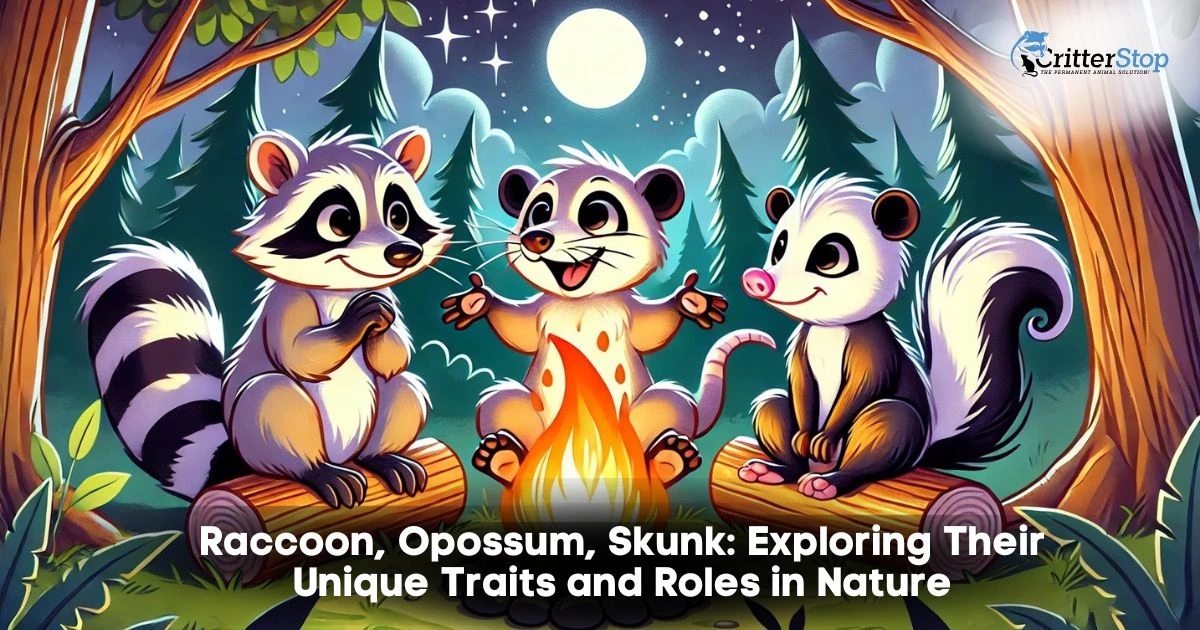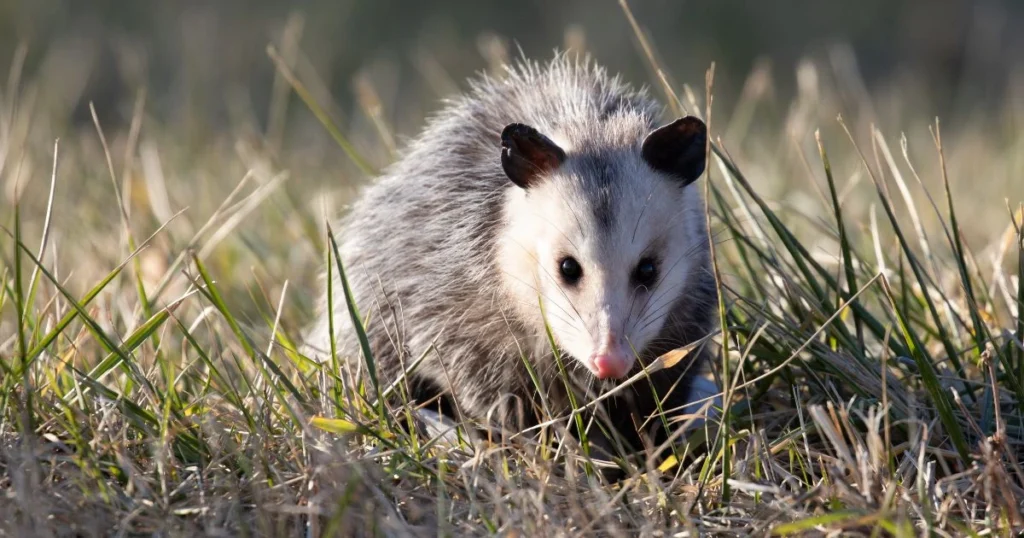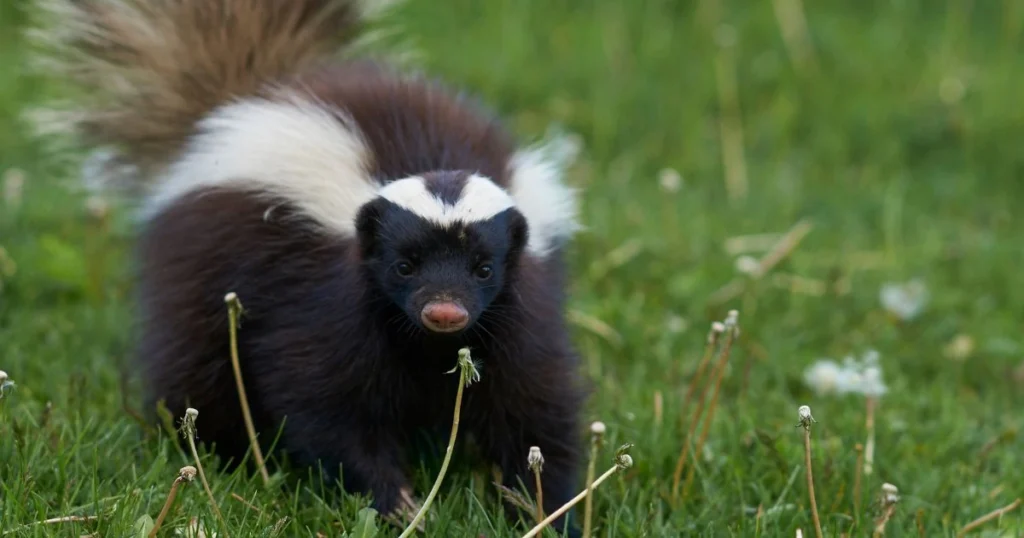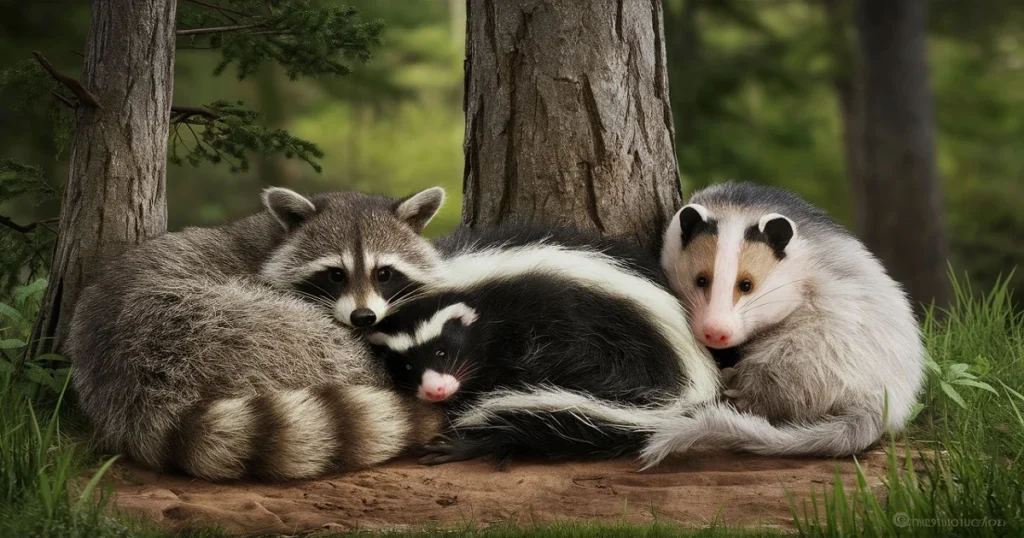
Regarding North American wildlife, three species often come to mind for their nocturnal habits and adaptability: the raccoon, opossum, and skunk. While sometimes considered nuisances, these animals play vital roles in maintaining ecological balance. Each has distinct traits that set them apart, from the raccoon's dexterous paws to the opossum's marsupial lineage and the skunk's infamous defensive spray. This comprehensive guide delves into these fascinating creatures' characteristics, behaviors, and ecological contributions.

The raccoon (Procyon lotor) is easily recognized by its bushy tail, black "mask," and dexterous front paws. Adult raccoons weigh between 10 and 20 pounds and measure around 2 to 3 feet in length, including the tail.
Raccoons are omnivores with an opportunistic diet, consuming fruits, nuts, insects, small animals, and human refuse. Their intelligence allows them to open containers, navigate complex environments, and adapt to urban settings.
Raccoons are highly adaptable, thriving in forests, wetlands, and urban areas. They are nocturnal creatures, often active at night as they forage for food and explore their surroundings.
Raccoons contribute to pest control by consuming insects and rodents. Their diet also helps with seed dispersal, aiding plant growth and forest regeneration.

The Virginia opossum (Didelphis virginiana) is North America’s only marsupial. Known for its pointed snout, prehensile tail, and grayish-white fur, the opossum weighs between 4 and 14 pounds and can reach 2.5 feet long.
Opossums are scavengers that feed on insects, small animals, fruits, and carrion. They are highly adaptable and live in forests, fields, and urban areas.
Opossums are nature’s cleanup crew. They consume decaying matter and reduce the spread of diseases. Their diet also helps control insect and rodent populations.

The striped skunk (Mephitis mephitis) is North America's most common skunk species. These mammals are famous for their black fur, white stripes, and distinctive bushy tails.
Skunks are best known for their ability to spray a foul-smelling liquid from their anal glands as a defense against predators. The spray can reach up to 10 feet and effectively deter threats.
Skunks are omnivores, eating insects, small mammals, fruits, and vegetation. They are nocturnal and solitary, foraging at night and resting during the day.
Skunks are found in various environments, including forests, grasslands, and suburban areas. They often take shelter in burrows, hollow logs, or under structures.
Skunks are important for pest control, consuming harmful insects like beetles and grubs. Their digging habits also aerate the soil, benefiting plant growth.
| Feature | Raccoon | Opossum | Skunk |
| Classification | Mammal | Marsupial | Mammal |
| Diet | Omnivorous | Omnivorous | Omnivorous |
| Defensive Mechanism | Intelligence and agility | "Playing possum" | Foul-smelling spray |
| Habitat | Forests, wetlands, urban | Forests, urban fields | Forests, grasslands, urban |
| Unique Trait | Dexterous paws | Marsupial pouch | Defensive spray |

These animals are highly adaptable, often bringing them into contact with humans. While they can sometimes be a nuisance, understanding their behaviors can lead to better coexistence.
Raccoons, opossums, and skunks are remarkable creatures that play essential roles in maintaining ecological balance. Understanding their behaviors and contributions can help us appreciate their presence and coexist peacefully with them. Each species, from the intelligent raccoon to the resilient opossum and the pest-controlling skunk, brings unique benefits to their ecosystems.
Critter Stop offers expert and humane wildlife removal services for dealing with raccoons, opossums, or skunks on your property. With outstanding customer reviews and a commitment to quality, Critter Stop ensures your property and local wildlife are treated with care. Call Critter Stop at (214) 234-2616 today for a free consultation and professional assistance.
Raccoons, opossums, and skunks are three common wildlife species that intrigue many people due to their unique behaviors, appearances, and ecological roles. Despite their differences, these animals often share overlapping habitats and are frequently encountered in suburban and rural areas. Below are answers to frequently asked questions about raccoons, opossums, and skunks, shedding light on their similarities and differences.
Raccoons are highly intelligent mammals known for their dexterous paws and black facial masks. Opossums are marsupials, meaning they carry their young in a pouch and are famous for "playing dead" as a defense mechanism. Skunks, conversely, are mammals recognized for their black-and-white stripes and ability to spray a foul-smelling liquid when threatened.
Yes, these animals often inhabit overlapping areas such as forests, wetlands, and suburban neighborhoods. Raccoons and skunks are nocturnal and may forage in the same locations at night, while opossums are opportunistic scavengers that adapt to various habitats. They rarely interact directly but coexist by occupying different ecological niches.
While all three animals are nocturnal and omnivorous, their behaviors differ. Raccoons are problem solvers known to open containers or doors to access food. Opossums scavenge and help clean up decaying matter, while skunks are solitary foragers who rely on their defensive spray to ward off predators.
These animals play critical roles in maintaining ecological balance. Raccoons help control rodent and insect populations while dispersing seeds. Opossums consume pests like ticks and clean up carrion, reducing disease spread. Skunks aerate the soil while digging for insects and act as natural pest controllers by consuming harmful bugs.
Raccoons have a distinctive black facial mask and bushy tails with rings, and they are often seen scavenging with their nimble paws. Opossums are smaller, with a pointed snout, white-gray fur, and a long, hairless tail. Skunks are easily identified by their bold black-and-white coloring and waddling gait, especially when they lift their tails in a defensive stance.
While these animals are generally non-aggressive, they can pose risks if provoked or cornered. Raccoons may carry rabies or other diseases that can be transmitted to pets. Opossums rarely pose direct threats but may hiss or drool when scared. Skunks can spray a strong-smelling liquid, which is harmless but unpleasant and difficult to remove.
If you notice one of these animals residing on your property, secure food sources like trash bins, pet food, and bird feeders to discourage their visits. For a more permanent solution, contact a professional wildlife control service to remove the animal and prevent future intrusions humanely. Avoid handling them yourself, as they may carry diseases or become defensive.
Visit our Critter Library and learn more about our furry friends